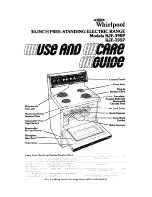
HearthStone Quality Home Heating Products Inc
®
Model 8390
26
which leads to the outside of the building should
correct this problem.
TALL TREES OR BUILDINGS:
These
obstructions, when located in proximity to the
top of the chimney can cause chronic or
occasional downdrafts. When selecting a site
for a new chimney, take care to consider the
placement of other objects in the vicinity of the
proposed chimney location.
WIND VELOCITY:
Generally, the stronger
and steadier a wind, the stronger (better) the
draft. However, "gusty" wind conditions may
cause erratic downdrafts. Wind caps, like the
Vacu-Stack, for the top of the chimney are
available as possible corrective measures here
BAROMETRIC PRESSURE:
Chimney
drafts are typically sluggish on balmy, wet, or
muggy days. This is a weather-related
phenomenon, which generally is self-correcting
as the weather changes.
BRISKNESS OF FIRE:
The hotter the fire in
your stove, the hotter your chimney and,
therefore, the stronger the draft.
BREAKS IN THE VENTING SYSTEM:
An
unsealed clean-out door at the bottom of the
chimney, leaky stovepipe joints, a poor
stovepipe-to-thimble connection, or a leaky
chimney may cause inadequate draft.
SEASONAL FACTORS:
Early fall and late
spring are generally difficult seasons in which to
establish proper drafts. The colder the outside
air (relative to room temperatures), the stronger
the draft.
Operating the Stove
There are days when a draft is not easily
established. As outlined above, seasonal factors
or a cold chimney may be the cause. Try
starting the fire by using very dry kindling and
small pieces of cordwood to obtain a quick, hot
fire. Tend the fire frequently with small fuel
until the chimney is hot and the draft is well
established.







































